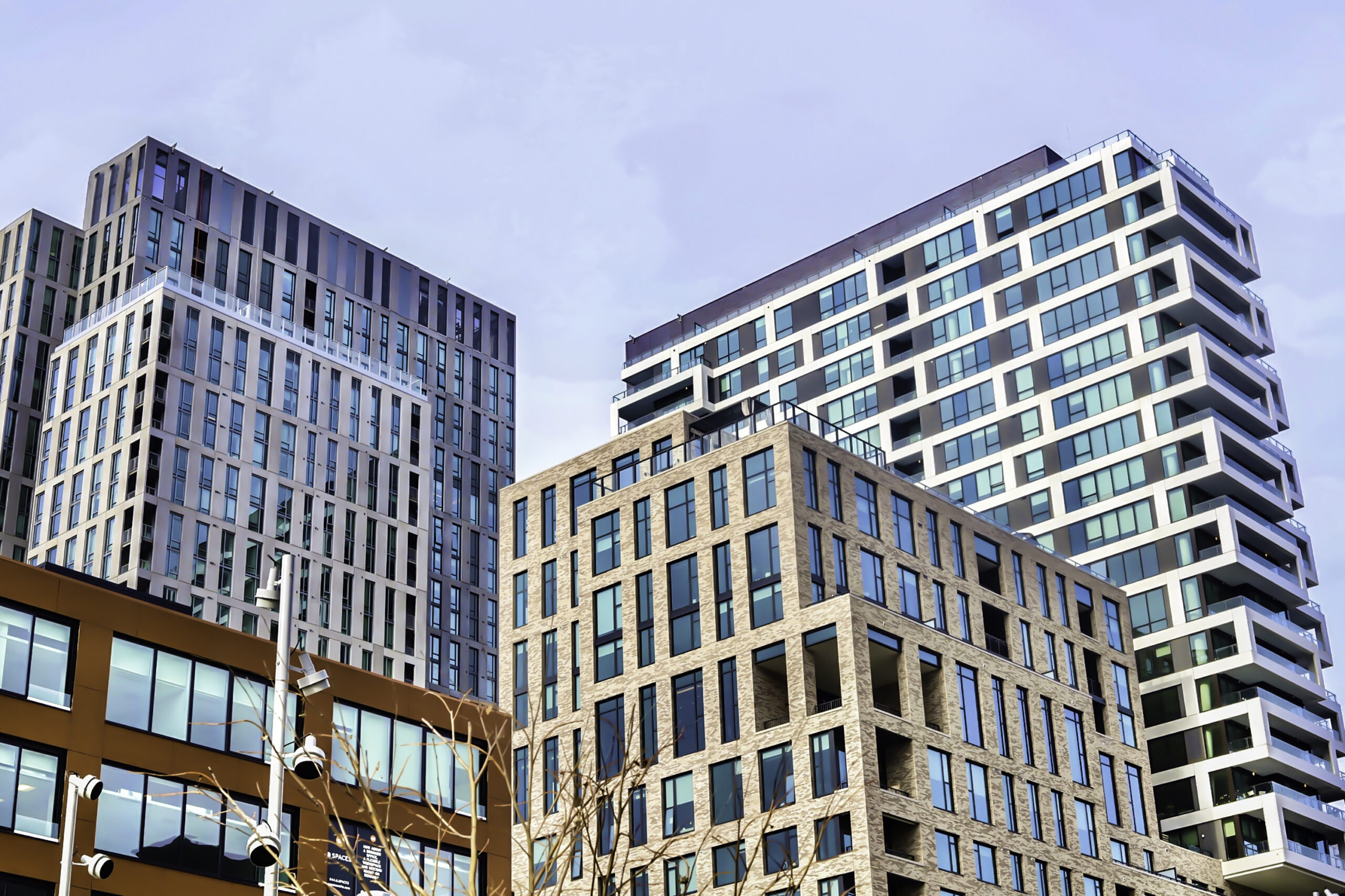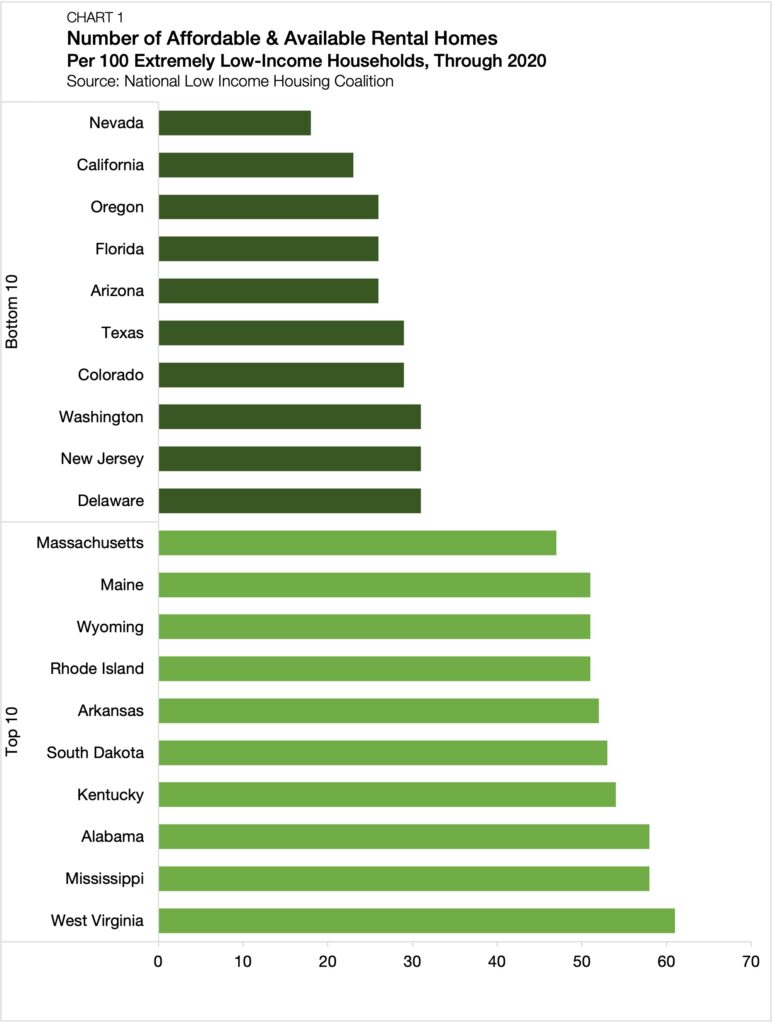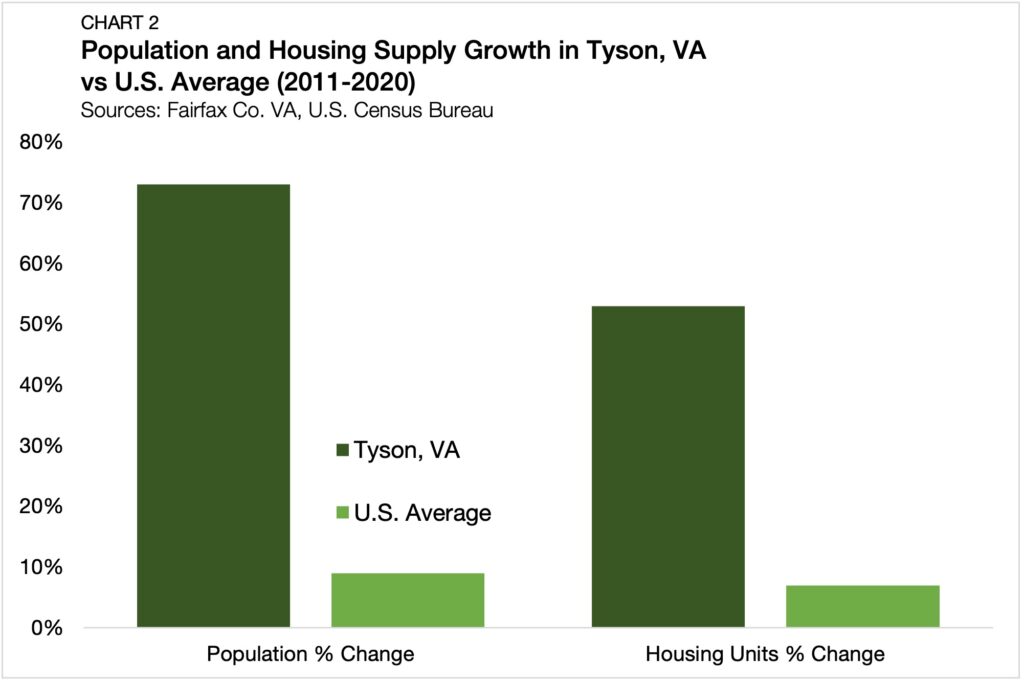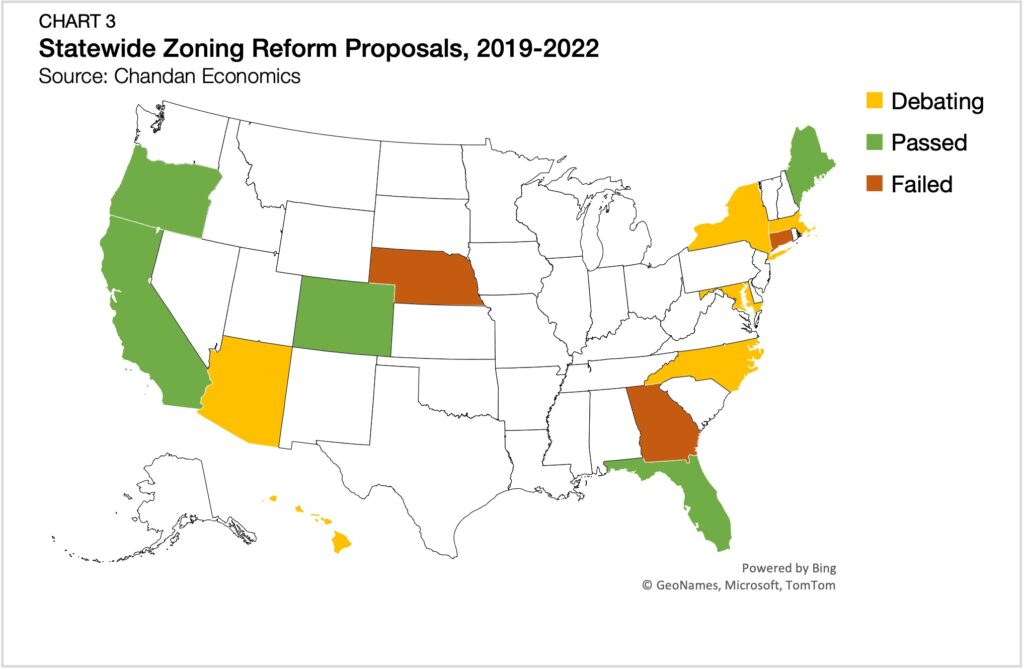Are New Zoning Policies an Answer to Housing’s Affordability Crisis?

- Amid a structural housing affordability crisis, policymakers are increasingly turning to zoning reforms to relieve cost pressures.
- The White House and HUD have joined several states and cities in pushing for zoning reform across the nation.
- Zoning reforms have been most successful in areas where policy changes were accompanied by other changes, such as eliminating parking requirements and allowing for mixed-use development.
The housing market rally over the past two years has facilitated almost nine trillion dollars in wealth creation, with homeowners experiencing the fastest equity growth rate in over two decades. However, shelter costs have ballooned for many renters and would-be buyers, advancing the urgency for additional affordable housing options. Amid record-setting rent growth, states and municipalities are increasingly turning to zoning reforms to encourage supply creation and relieve cost pressures.
A population reshuffling during the pandemic magnified supply shortfalls facing many U.S. cities. Data tracked by the National Low Income Housing Coalition estimates that the nation’s housing shortage currently sits at 7 million, with just 36 affordable and available units for every 100 of the most income-constrained renters in the U.S. Even within the top 10 states for housing availability, none meet coverage of at least two-thirds of their most extremely low-income households. (Chart 1).

Local zoning ordinances contribute to the affordable housing shortage, with a growing body of research pointing to evidence of a relationship between restrictive land-use regulations and housing unaffordability. Zoning regulations effectively cap the amount of supply that can be added to a market, limiting new construction, and driving up rents in the process. In this piece, the research teams at Chandan Economics and Arbor Realty Trust will explore how local policymakers are reversing this zoning process — removing restrictions and adding targeted deregulation into their affordable housing toolkits.
Effectiveness of Up-Zoning in NOAH creation
No crown-jewel policy has emerged, but zoning code changes that account for local population growth can often help boost the construction of naturally occurring affordable housing, or NOAH.
Portland, Oregon
For decades, Portland, Oregon, has been a leader in bold zoning reform efforts, starting with a 1981 law that first legalized accessory-dwelling-units (ADUs) in some neighborhoods. Over the following two decades, Portland’s city-council gradually removed restrictions on ADU construction to adjust for population growth, and with it, built over 4,000 ADUs between 1995 and 2019. [1]
Portland’s willingness to revisit zoning regulations as the needs of its residents’ change has influenced statewide efforts to do the same. In 2019, Oregon enacted a law requiring most cities with populations over 1,000 to allow the construction of duplexes, while towns with more than 25,000 residents must also allow townhouses, triplexes, and fourplexes.
Tysons, Virginia
In 2010, Tysons, Virginia (a suburb roughly 10 miles west of Washington, D.C.) implemented a redevelopment plan that reformed zoning rules that helped spur local housing development. The plan established new zones for high-rise multifamily housing and allowed for denser, mixed-use development surrounding the town’s metro station. According to Tysons’ government reports[2], the town went from 8,943 housing units in 2011 to 13,701 in 2020 — a 53% increase in the housing stock. While more development is needed in Tysons to keep up with population growth, the reform efforts helped the town adjust to a 73% increase in population over the same period (Chart 2).

Where Reforms Efforts are Picking Up Steam
While select areas have experimented with zoning reform as a supply creation tool in the past, the approach has gained momentum during the pandemic years as affordability issues mount.
California grabbed some of the biggest headlines in 2021 with the signing of Senate Bill (SB) 9, a bill that allows for duplexes in residential zones that had historically only permitted single-family home construction. Further, a separate bill, SB 10 removes limits on the ability of California municipalities to reform local zoning codes when they are doing so to allow for more housing.
Reforms in the Golden State could be perceived as a big deal given its historical deference to localities, many of which tend to favor restrictive, so-called “not-in-my-back-yard” (NIMBY) policies. San Francisco, one of the most undersupplied metros in the country with a knack for NIMBYism, is currently debating proposals that would expand the construction of fourplexes in the city, a product of SB 10’s selective deregulation.
Efforts to reexamine zoning codes are widespread. Last year, Massachusetts passed its first statewide overhaul of zoning laws in 40 years. Just last month, Maine’s governor signed into law two pieces of legislation aimed at addressing affordable housing concerns through re-zoning. Additional statewide proposals have popped up in Arizona, Maryland, Massachusetts, and North Carolina, among others (Chart 3).

Federal policymakers and regulators are also looking to encourage up-zoning efforts. On May 16, the White House released a wide-ranging set of proposals aimed at boosting housing supply, including an expansion of Low-Income Housing Tax Credits (LIHTC) and incentives for jurisdictions that reform land-use policies. Additionally, the Department of Housing and Urban Development (HUD) has already set aside $10 billion in grants and tax incentives to help localities implement zoning changes.
Limits to Zoning Deregulation and Other Considerations
Boilerplate zoning deregulation is no silver bullet; even the nation’s most successful examples haven’t managed to keep the local housing supply in equilibrium. In Minneapolis, reform efforts saw permits for small apartment buildings double but only totaled 81 total housing units. Additional efforts such as legalizing accessory dwelling units and the elimination of minimum parking requirements, as done in Portland, have helped free up additional space for residential development. Ultimately, these efforts assist zoning reform by further lowering development costs while encouraging cheaper and more eco-friendly transit alternatives.
Policymakers still weigh housing priorities alongside infrastructure and environmental factors, critical inclusions for the sustainability of reforms. Further, incentivizing the market to create more housing will naturally push investment towards areas with the highest returns. Such natural economic sorting may siphon human capital away from lagging regions and into already wealthy zip codes, causing new market imbalances to emerge. While more empirical research is needed, these examples emphasize the need for a comprehensive approach to reforms.
As rising interest rates and tightening monetary conditions raise capital costs, a new consensus on zoning laws could help alleviate pressures on construction. Wages continue to struggle to keep up with inflation, and growing macroeconomic headwinds makes addressing housing affordability more urgent. Recent momentum pushing for zoning reform is a welcomed sign, with both developers and renters poised to benefit from the paradigm shift.
[1] Urban Institute analysis of ADU permit counts, via the Portland Bureau of Development Services’ ADU database
[2] Data sourced from Tysons 2010-2011, 2019-2020 Progress Reports
Interested in the multifamily real estate investment market? Contact Arbor today to learn about our array of multifamily and affordable housing financing options and view our other market research and multifamily posts in our research section.

